
Pocatello is the county seat and largest city of Bannock County, with a small portion on the Fort Hall Indian Reservation in neighboring Power County, in the southeastern part of the U.S. state of Idaho. It is the principal city of the Pocatello metropolitan area, which encompasses all of Bannock County. As of the 2020 census, the population of Pocatello was 56,326.

Idaho City is a town in, and the county seat of, Boise County, Idaho, United States, located about 36 miles (58 km) northeast of Boise. The population was 485 at the 2010 census, up from 458 in 2000.

Leadore is an incorporated small town in Lemhi County, Idaho, United States. The population was 105 at the 2010 census.
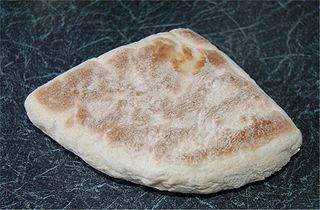
Soda bread is a variety of quick bread traditionally made in a variety of cuisines in which sodium bicarbonate is used as a leavening agent instead of the traditional yeast. The ingredients of traditional soda bread are flour, baking soda, salt, and buttermilk. The buttermilk in the dough contains lactic acid, which reacts with the baking soda to form tiny bubbles of carbon dioxide. Other ingredients can be added, such as butter, egg, raisins, or nuts. An advantage of quick breads is their ability to be prepared quickly and reliably, without requiring the time-consuming skilled labor and temperature control needed for traditional yeast breads.
The Shoshone or Shoshoni are a Native American tribe with four large cultural/linguistic divisions:
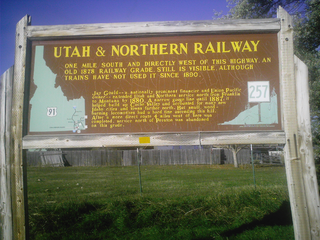
The Utah & Northern Railway is a defunct railroad that was operated in the Utah Territory and later in the Idaho Territory and Montana Territory in the western United States during the 1870s and 1880s. It was the first railroad in Idaho and in Montana. The line was acquired by a Union Pacific Railroad subsidiary, the Oregon Short Line, and is today operated by the Union Pacific Railroad as the Ogden Subdivision, part of the Pocatello Subdivision, and the Montana Subdivision.
The Bannock War of 1878 was an armed conflict between the U.S. military and Bannock and Paiute warriors in Idaho and northeastern Oregon from June to August 1878. The Bannock totaled about 600 to 800 in 1870 because of other Shoshone peoples being included with Bannock numbers. they were led by Chief Buffalo Horn, who was killed in action on June 8, 1878. After his death, Chief Egan led the Bannocks. He and some of his warriors were killed in July by a Umatilla party that entered his camp in subterfuge.
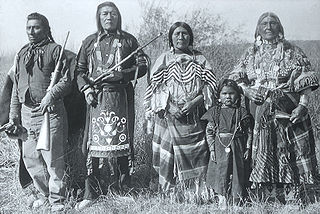
The Bannock tribe were originally Northern Paiute but are more culturally affiliated with the Northern Shoshone. They are in the Great Basin classification of Indigenous People. Their traditional lands include northern Nevada, southeastern Oregon, southern Idaho, and western Wyoming. Today they are enrolled in the federally recognized Shoshone-Bannock Tribes of the Fort Hall Reservation of Idaho, located on the Fort Hall Indian Reservation.

A bannock is a variety of flatbread or quick bread cooked from flour, typically round, which is common in Scotland and other areas in the British Isles. They are usually cut into sections before serving.
Swan Lake is a ballet by Russian composer Pyotr Ilyich Tchaikovsky. (1875-1876)
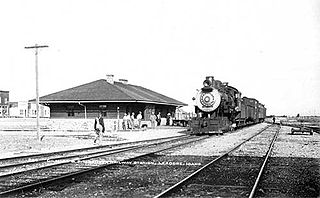
The Gilmore and Pittsburgh Railroad (G&P), now defunct, was an American railroad located in southwestern Montana and east-central Idaho. Constructed in 1909 and 1910 between Armstead, Montana, and Salmon, Idaho, the G&P served mining and agricultural areas in Lemhi County, Idaho, and Beaverhead County, Montana. The line was financially backed by the Northern Pacific Railway (NP) and later became its subsidiary. Never financially successful, the G&P ceased operations in 1939, and the railroad was dismantled the following year.

The history of Idaho in the American Civil War is atypical, as the territory was far from the battlefields.

An oatcake is a type of flatbread similar to a cracker or biscuit, or in some versions takes the form of a pancake. They are prepared with oatmeal as the primary ingredient, and sometimes include plain or wholemeal flour as well. Oatcakes are cooked on a griddle or baked in an oven.

The Montana Trail was a wagon road that served gold rush towns such as Bannack, Virginia City and later Helena during the Montana gold rush era of the 1860s and 1870s. Miners and settlers all traveled the trail to try to find better lives in Montana. The trail was also utilized for freighting and shipping supplies and food goods to Montana from Utah. American Indians, as well as the weather, were major risks to traveling on the Montana Trail.

The Lemhi Shoshone are a tribe of Northern Shoshone, also called the Akaitikka, Agaidika, or "Eaters of Salmon". The name "Lemhi" comes from Fort Lemhi, a Mormon mission to this group. They traditionally lived in the Lemhi River Valley and along the upper Salmon River in Idaho. Bands were very fluid and nomadic, and they often interacted with and intermarried other bands of Shoshone and other tribes, such as the Bannock. Today most of them are enrolled in the Shoshone-Bannock Tribes of the Fort Hall Reservation of Idaho.

Bannock Pass is a high mountain pass in the Beaverhead Mountains, part of the Bitterroot Range in the Rocky Mountains. The pass lies on the Montana-Idaho border on the Continental Divide, at an elevation of 7,684 feet (2,342 m) above sea level.
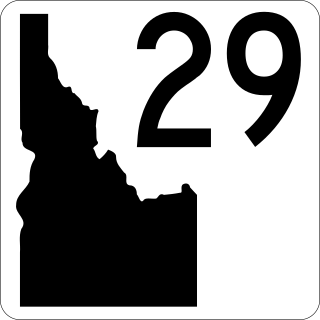
State Highway 29 (SH-29) is a 13.614-mile-long (21.910 km) state highway in Idaho. SH-29 runs from SH-28 in Leadore to Montana Secondary Highway 324 (S-324) at the Montana state line at Bannock Pass.
Windy Pass may be one of the following mountain passes:
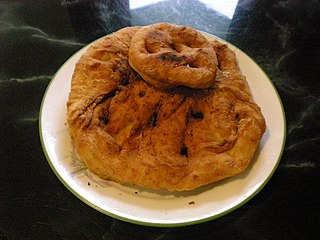
Bannock, skaan, Indian bread or frybread is found throughout North American Native cuisine, including that of the Inuit of Canada and Alaska, other Alaska Natives, the First Nations of the rest of Canada, the Native Americans in the United States, and the Métis.














